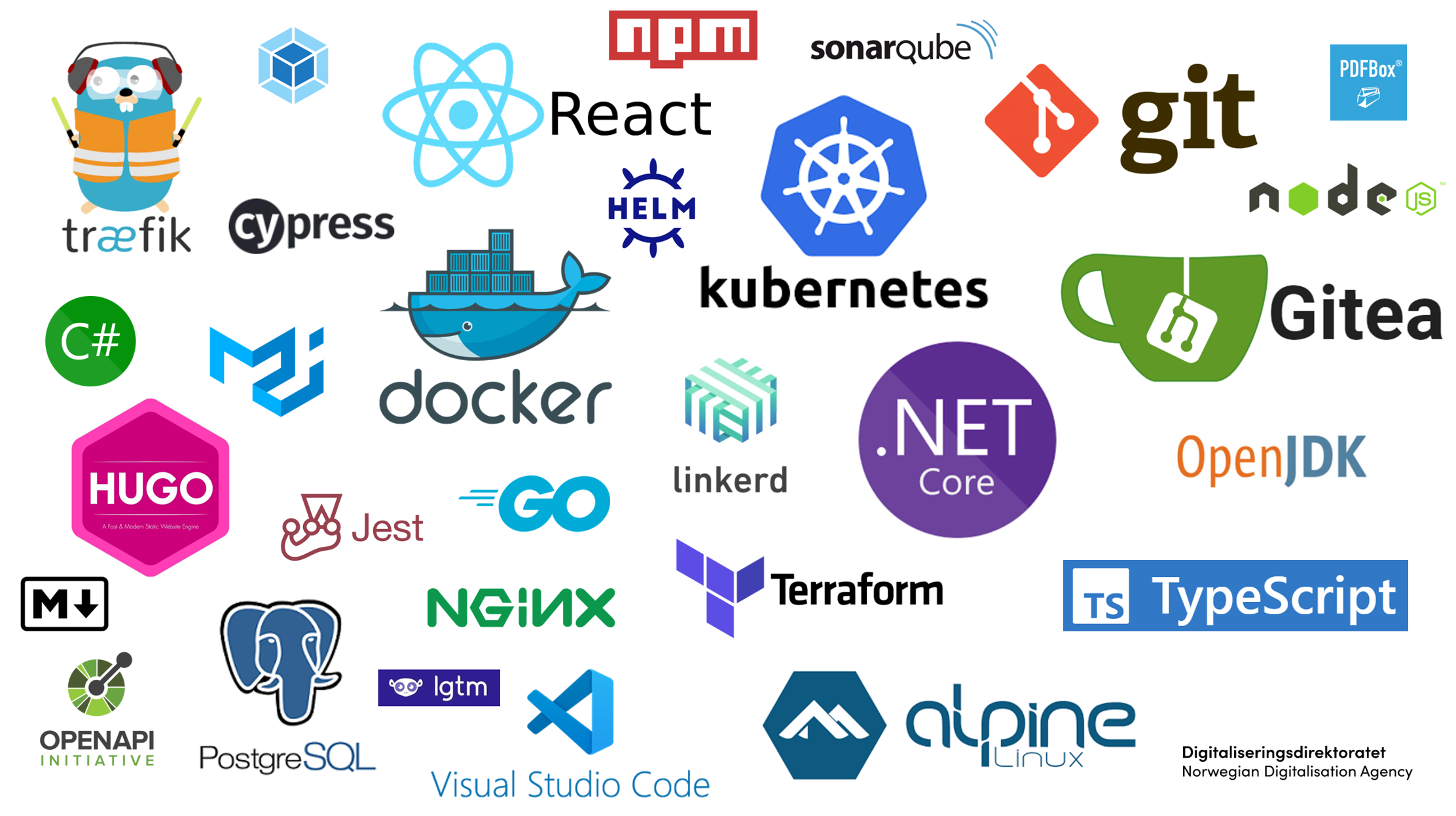Architecture Principles
The Architecture Principles are guidelines for the construction of the architecture in Altinn 3.
The following architecture principles has been defined for the solutions. The principles are document as suggested by TOGAF.
The architecture principles below is described like TOGAF recommends.
Free and open-source software
Principle
The components and solutions in Altinn 3 are Free and Open Source.
Rationale
Possibility to share the platform as Open Source. The possibility to create an Open Source community around the platform.
Implications
- Code developed is shared on GitHub. See License.
- We also have our backlog on GitHub.
- Can’t use closed source products in the platform
- Can’t use products with licensing limiting use and modifications
- Others can easily reuse, modify and improve our components and solutions
Web Standards
Principle
Use Web Standards.
Rationale
Can use standard tools and developers does not need to have special skills to develop components in the platform or applications to run on the platform.
Implications
- Formats and frameworks used need to follow standards
- We use JWT in authentication cookies
Build with modern and popular frameworks
Principle
When choosing between different technology with similar capabilites, select the most modern and popular framework.
Rationale
The project is open source and it is a big advantage to build the solution on open source technology that developers love to use. This gives better access to resources with the needed competency.
Implications
- We build the frontend using React and ASP.NET Core, the 2 most loved web frameworks.
- We use .NET Core, the framework that developers love the most
- We use Linux and Docker containers in Kubernetes, the 3 most loved platforms.
- We use Visual Studio Code, the most loved development environment.
Favor standards over custom
Principle
Whenever we need to store information we favor standard formats for that information over creating a custom format.
Rationale
Standard formats are documented and is some cases it exists 3. party tools to edit information.
Implications
- We use BPMN 2.0 to define the process for applications
- We use XACML 3.0 to define authorization policies for applications
- We use JSON as general format.
Isolation
Principle We should try isolate application and data own by one organization from others.
Rationale
Reduce risk for one organization affecting service for another organization.
Implications
- Seperate Kubernetes Clusters for each organization
- Seperate data store for each organization
Design and build for Public Cloud
Principle
The solutions should be deployed to a public cloud solution. The architecture need to support that.
Rationale
Using public cloud infrastructure from one of the big vendors gives cost savings, the team can be more agile and the solutions can take scale.
Implications
- Additional security measures
- Need to build knowledge about cloud solutions
Limit cloud lock-in
Principle
The architecture should try to avoid technology that locks the platform to a specific public cloud vendor. But not for all costs. In many cases it would still make sense to choose a managed service only available in a given public cloud.
Rationale
The goal with this principle is that it should be possible to move the solution to a different cloud provider without needing to build everything from scratch.
Implications
- Docker and Kubernetes is used for containers and orhecstration of containers.
- We use document databases and BLOBS for storing data.
- Everything talks through APIs.
Build as microservices
Principle
The platform is built as microservices. Related functionality is grouped in to seperate applications and deployed as containers. Apps created in Altinn Studio will be deployed as microservices/apps.
Rationale
The different components can be scaled differently, it can be deployed independently. Reduced deploy time. Different teams can be responsible for different microservices/apps.
Implications
- Functionality in Altinn Platform is seperated in Authentication, Authorization, Profile, Storage, Pdf and Register components
- Applications created in Altinn Studio is deployed as microapps to Altinn Apps
Design for automation
Principle
The component should be created in a way that they support automation in development, deployment and operations.
Rationale
Reduce the required effort to develop and operate the platform.
Implications
- We use Continuous integration
- We use Continuous deployment
- We build Infrastructure as code
- We use Automatic scaling
- We monitor and do automatic recovery of components
Favor managed services
Principle
We should use manages cloud services when possible.
Rationale
Reduce effort needed to host and scale the platform.
Implications
- Use managed PostgreSQL in Azure for Gitea
- Use managed CosmosDB as document database
- Use Azure blob storage for storing data
- Use Azure Kubernets Services to manage the Kubernetes Clusters
- Use Azure Api Management as API-management platform
Security in depth
Principle
All components should authenticate and authorize requests.
Rationale
We can’t trust other components.
Implications
- Components in Altinn Platform authenticates and authorize end user even if the request comes throug a application that also require the same
- We use API management to control traffic between Altinn Apps and Altinn Platform.
Cross-platform
Principle
The components in the platform should be cross platform and can run on Microsoft Windows, Linux and MacOs.
Rationale
Developers should be able to create applications on any platform, and our platform should never be locked to a single operating system or processor-architecture.
Implications
- We use .NET Core or Java to build components.
Container technology
Principle
Applications should be deployed as containers.
Rationale
The rationale to use containers is that we get a consistent runtime environment that can run anywhere. Isolate runtime environment. Consistency.
Implications
- Deploy and run applications/components in docker containers.

